Oak trees are majestic and resilient, yet they face various pest and disease issues that can affect their health.
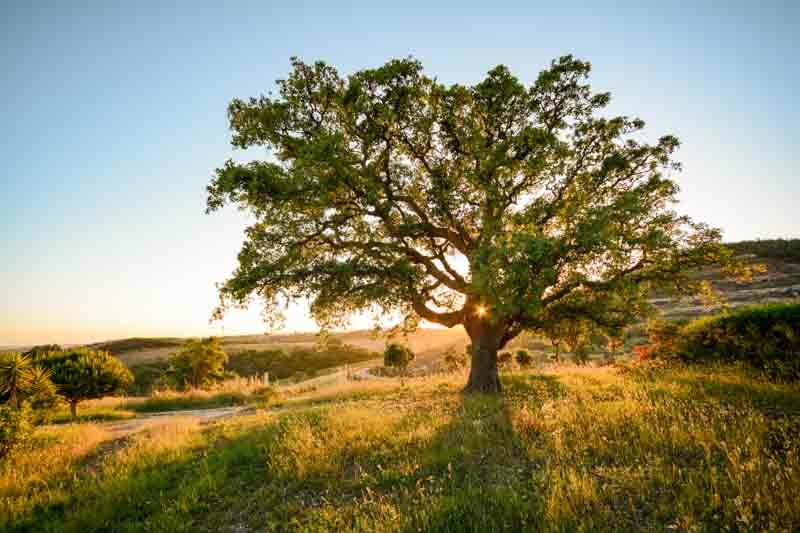
Oaks belong to the Quercus genus, which encompasses over 600 species, revered for their majestic stature and ecological importance. Native to various regions in the Northern Hemisphere, oaks thrive in a range of habitats, from dense forests to urban landscapes. These trees are celebrated for their robust wood, distinctive lobed leaves, and acorns, which play a crucial role in ecosystems as a food source for wildlife. Oaks symbolize strength and longevity, with some species living for several centuries. Beyond their environmental benefits, oaks hold significant cultural and historical value, prominently featured in folklore and traditional uses across the world. Discover eight compelling reasons to grow an oak tree.
Oak trees are majestic and resilient, yet they face various pest issues that can affect their health. From foliage-munching caterpillars to sap-sucking aphids and scale insects, these pests can cause significant damage. Wood-boring borers threaten their structural integrity, while gall wasps create abnormal growths. Understanding these challenges is crucial for the effectively managing and preserving these vital trees, ensuring they continue to thrive and contribute to their ecosystems for generations to come.
Description: Borers are insects that spend a portion or all of their larval stage inside the stems, trunks, branches, or fruits of plants, where they feed and grow. Borers often prefer stressed, weakened, or older trees.
Symptoms: Infestations are evidenced by entry and exit holes in the trunk or branches, frass (sawdust-like material), wilting foliage, branch dieback, canopy thinning, and overall decline in plant health. Severe infestations can lead to structural weakness and potentially the death of the plant.
Treatments: Maintain tree health to prevent infestations. Prune and destroy infested branches, use physical barriers, pheromone traps, beneficial insects, nematodes or fungi that target borer larvae, or insecticides for severe cases. Consult an arborist for advanced infestations or preventive care.
Description: Caterpillars are the larval stage of butterflies and moths, characterized by their elongated, segmented bodies and voracious appetite. They possess a pair of antennae, strong mandibles for chewing leaves, and several pairs of legs that aid in movement.
Symptoms of Infestation: Signs of caterpillar infestation include visible chewed leaves, skeletonized foliage, silk threads, and frass (caterpillar droppings) on or around the affected plants. Severe infestations can lead to stunted plant growth, reduced crop yields, and, in extreme cases, complete defoliation.
Treatments: Control measures depend on the severity of the infestation and the caterpillar species. Options include manual removal for small infestations, encouraging natural predators (birds, assassin bugs, lacewings, predaceous ground beetles, and spiders), and Bacillus thuringiensis (Bt) that produces toxins harmful to caterpillars when ingested. Insecticides should be used cautiously to avoid harming beneficial insects.
Description: Galls are abnormal plant growths, often round or irregular in shape, caused by various organisms like insects, mites, fungi, or bacteria. These growths can occur on leaves, stems, or roots and vary in size, color, and texture depending on the causative agent and the host plant.
Symptoms: Noticeable lumps or swellings on plants, which can be green, red, or brown. Affected areas may show leaf curling or distortion. While galls are mainly cosmetic, severe infestations can reduce plant vigor, stunt growth, and in rare cases, cause premature leaf drop or branch dieback.
Treatments: Most galls require no treatment as they rarely harm the plant. For aesthetic control, prune and destroy affected plant parts. Promote plant health to reduce susceptibility. In cases of severe infestation, appropriate insecticides or miticides may be used, but their effectiveness is limited due to the protective nature of galls.
Description: Gypsy moths are invasive pests with distinct life stages: hairy caterpillars with blue and red dots and adults with mottled brown wings. Originating from Europe, they’ve become a significant concern in North America due to their voracious appetite.
Symptoms: Trees infested with gypsy moth caterpillars show defoliated branches, with severe cases leading to almost complete leaf loss. Repeated infestations can weaken trees, making them susceptible to other pests and diseases or lead to tree death.
Treatments: In fall and winter, prune and discard egg masses from trees and surfaces; actively find and eliminate caterpillars. Employ natural predators like birds, tachinid flies, parasitic wasps, and ground beetles to manage moth numbers. Apply insecticides at optimal times to effectively curb gypsy moth populations.
Description: Leafminers are the larvae of certain insects, like moths, flies, or beetles. They live inside and feed on the leaf tissue, creating distinctive tunnels or mines that can affect the tree’s ability to photosynthesize and overall health.
Symptoms: Visible signs include serpentine-like tunnels or blotches on leaves, discoloration, and, in heavy infestations, premature leaf drop. The damage is mostly aesthetic but can weaken the plant if it’s extensive.
Treatments: Treatment involves pruning and disposing of affected leaves, row covers, or netting, applying insecticidal soap and neem oil, or using systemic insecticides if the infestation is severe. Encouraging natural predators, such as spiders, lacewings, ladybugs, soldier beetles, and parasitic wasps, can also help manage leafminer populations.
Description: Scale insects are small, sap-sucking pests, often resembling bumps on plant stems, leaves, or fruit. They’re known for their protective outer coating, which shields them from predators and environmental factors, making them a resilient adversary for many plant species.
Symptoms: Infested plants show signs like yellowing leaves, stunted growth, and sooty mold development, resulting from the sticky “honeydew” excreted by the insects. Severe infestations may lead to leaf drop, branch dieback, or even plant death if not addressed.
Treatment Indoors: Treat scale insects on indoor plants by lightly scraping these pests with a fingernail. Scales are susceptible to many insecticides, such as insecticidal soap, neem oil, canola oil, or pyrethrins. Apply to infested areas, ensuring thorough leaf coverage. Repeat treatments as needed, and consider isolating affected plants to prevent spread.
Treatment Outdoors: For outdoor plants, manually remove scale insects using a soft brush or cloth soaked in soapy water. Spray affected plants with neem oil or horticultural oil, targeting the undersides of leaves and stems where scales reside. Encourage beneficial insects like ladybugs, lacewings, soldier beetles, and parasitic wasps that prey on scale insects.
Description: Treehoppers are small insects with distinctive, exaggerated pronotums that can resemble thorns, leaves, or branches, aiding in their camouflage. They exhibit a wide range of colors and patterns, helping them blend seamlessly with their host plants.
Symptoms: Treehoppers pierce plant tissue to feed on sap, which can lead to yellowing or curling of leaves, stunted plant growth, and reduced yields in crop plants. Their feeding can also create a sugary excrement called honeydew, attracting ants and leading to sooty mold growth on leaves.
Treatments: Water spray. In severe infestations, horticultural oils or insecticidal soaps can be applied directly to the affected plants to kill the treehoppers without harming beneficial insects. Regular monitoring and proper garden hygiene can also prevent large infestations.
Description: Whiteflies are tiny, winged insects, often found in clusters on the undersides of leaves. They’re known for their powdery white appearance and are common in warm climates and greenhouses. Whiteflies feed on sap, weakening the host plant and secreting a sticky honeydew.
Symptoms: Infested plants exhibit yellowing leaves, stunted growth, and a sticky residue on leaves, which may lead to sooty mold growth. Heavy infestations can cause leaf drop. Whiteflies also transmit various plant viruses, further damaging the plant.
Treatment Indoors: Begin by washing the plant to physically remove whiteflies. Then, spray the plant thoroughly with insecticidal soap or garlic oil, focusing on the lower leaf surfaces where whiteflies are most prevalent. For ongoing control, consider applying imidacloprid granules to the soil, which offers systemic protection against whiteflies.
Treatment Outdoors: Start with a thorough washing and then spray with insecticidal soap or neem oil extract. For heavier infestations, use products containing acetamiprid, imidacloprid, cyfluthrin, deltamethrin, or lambda-cyhalothrin, ensuring complete plant coverage, especially under leaves. Sticky traps can help reduce populations. Ensure good air circulation and avoid over-fertilizing, which can attract more whiteflies. Introducing natural predators like lacewings and ladybugs can also help manage whitefly populations effectively.
Oak trees are not immune to disease challenges that can compromise their health and vitality. Key issues include oak wilt, a deadly fungal infection causing rapid decline; powdery mildew, impairing photosynthesis with its white, powdery residue; sudden oak death, marked by lethal bark cankers; and root rot, prevalent in poorly drained soils.
These diseases, along with leaf spot-causing anthracnose, can lead to defoliation, weakened structures, and, in severe cases, tree mortality, underscoring the importance of vigilant care and disease management for these vital trees.
Mistletoe is a unique plant known for its parasitic nature, attaching itself to trees and shrubs to obtain nutrients. It holds cultural significance as a symbol of love and celebration during the holiday season. However, its presence can sometimes harm host plants, making it both intriguing and challenging for enthusiasts and ecologists alike.
Iron deficiency, also known as iron chlorosis, in plants refers to a condition in which the plant is unable to obtain sufficient amounts of iron from the soil, resulting in a lack of chlorophyll and yellowing of the leaves. Iron is an essential micronutrient that is necessary for the formation of chlorophyll, and its deficiency can lead to stunted growth and poor plant health.
Description: Anthracnose is a term used to describe a group of fungal diseases that affect a wide range of plants, including trees, shrubs, and crops.
Symptoms: Symptoms include irregular-shaped brown or black leaf spots, sunken tan to red-brown lesions on stems, and premature leaf drop. In severe cases, cankers can form on branches, and fruit can exhibit dark, sunken spots.
Treatments: Remove and discard infected leaves and branches. Apply a fungicide containing copper-based compounds. Ensure good air circulation through pruning and proper spacing.
Description: Armillaria Root Rot is a destructive fungal disease affecting various trees and woody plants, causing root decay and significant damage to the plant’s health and stability. Also known as “oak root fungus,” it’s a white, fan-shaped mycelium that spreads underground, attacking and rotting the roots.
Symptoms: Early symptoms often include yellowing of the leaves, reduced growth, wilting, and early leaf drop. The crowns may thin, and branches may die back. A key identifier is honey-hued mushrooms emerging at the base of afflicted trees or shrubs during late summer to fall.
Treatments: Remove and destroy infected trees. Fumigate soil before replanting. Ensure good drainage and avoid overwatering. Use resistant plant varieties when available. Chemical treatments are limited and often not effective.
Description: Bacterial Leaf Scorch (BLS) is a tree disease caused by the bacterium Xylella fastidiosa. It affects a variety of trees, including oaks and elms, disrupting water flow within the plant and leading to leaf scorch symptoms. BLS is spread primarily by xylem-feeding insects like leafhoppers.
Symptoms: Symptoms include marginal leaf browning or scorching, often with a yellow halo between healthy and affected tissue. Leaves may prematurely drop, and over time, affected branches experience dieback. Symptoms typically appear in late summer and early fall and progressively worsen each year.
Treatments: There’s no cure for BLS, but management focuses on maintaining tree health with proper watering and mulching, pruning infected limbs, and using resistant tree varieties. Antibiotic injections can suppress symptoms but are not a long-term solution.
Description: Heart rot is a fungal disease that affects the inner heartwood of trees, particularly older or damaged ones. Decay-causing fungi enter through wounds or broken branches, decomposing the core while often leaving the exterior intact.
Symptoms: Externally, trees might show mushroom or fungal growth at the base or on the trunk. There might be cavities or hollows in the trunk. Infected trees may have a weakened structure, leading to increased susceptibility to breaking in wind or storms.
Treatments: Avoid injuring trees, as wounds provide entry points for fungi. Prune dead or broken branches and ensure proper wound care. Promote tree health through proper watering and fertilization. In advanced cases, consult an arborist for potential tree removal to ensure safety.
Description: Hypoxylon Canker, a fungal disease caused by Hypoxylon mammatum, primarily targets stressed hardwood trees. It manifests as damaging cankers on the bark and is exacerbated by environmental stress, often leading to significant tree decline and potential mortality.
Symptoms: Symptoms include the formation of sunken cankers on the bark, which disrupt nutrient and water flow, leading to branch dieback. Over time, the bark over cankers sloughs off, exposing a silver or black fungal mat. Advanced infections result in leaf wilt, premature leaf drop, and tree death.
Treatments: Effective treatment is limited; prevention through maintaining tree health is key. This involves proper watering, avoiding tree wounds, and managing soil conditions. Prune infected branches to slow disease spread, sterilizing tools between cuts. Severely affected trees should be removed to prevent further infection of nearby trees.
Description: Oak Leaf Blister is a disease caused by the fungus Taphrina caerulescens, primarily affecting oak trees. This disease typically emerges in cool, wet spring weather, infecting the young, developing leaves of various oak species.
Symptoms: Infected leaves display raised, round blisters, usually pale green or yellowish. As the season progresses, these blisters turn brown and become dry and papery. While Oak Leaf Blister is primarily cosmetic, severe cases can lead to distorted leaf growth and premature leaf drop.
Treatments: Treatment usually isn’t necessary, as this is generally a cosmetic issue and doesn’t harm the tree’s overall health. However, maintaining good tree health can reduce susceptibility. Fungicides can be applied in early spring before bud break for severe infections. Proper sanitation, like cleaning fallen leaves, can also help.
Description: Oak Wilt is a deadly fungal disease caused by Bretziella fagacearum, affecting oak trees. It disrupts the tree’s water-conducting system, leading to rapid wilting and death. The disease spreads through root grafts and insect vectors, posing a significant threat to oak populations.
Symptoms: Oak Wilt symptoms include rapid leaf wilting and browning, beginning at the margins and advancing inward. Affected trees show premature leaf drop and thinning canopies. Red oaks exhibit a swift decline, often dying within weeks, while white oaks experience a more gradual progression of symptoms.
Treatments: Treatment involves preventive fungicide injections for high-value trees and removing infected trees to prevent spread. Avoid pruning during spring and early summer to reduce infection risk. Implementing root graft barriers can help prevent underground fungal spread. Maintaining tree health and sanitation practices is also crucial for disease management.
Description: Powdery mildew is a common fungal disease affecting a wide range of plants. It manifests as white or grayish powdery spots, primarily on the upper surfaces of leaves and stems. Though it can mar a plant’s appearance, it’s often more of a cosmetic issue than a fatal one.
Symptoms: Powdery white or grayish-white fungal growth on the leaves, stems, and sometimes fruit and flowers. Distorted or stunted growth, yellowing or curling of leaves, stunted or reduced fruit or flower production, reduced plant vigor.
Treatments: Increase air circulation, reduce overhead watering, and prune affected areas. Apply fungicides or homemade solutions like baking soda sprays. Neem oil and horticultural oils can also suppress the spread. Ensure good garden hygiene to prevent recurrence.
Description: Sudden Oak Death (SOD) is a devastating disease caused by the pathogen Phytophthora ramorum, primarily affecting oak trees and some other plant species. It’s characterized by rapid deterioration and death of infected trees, posing a significant threat to forest ecosystems, particularly in the western United States.
Symptoms: Bleeding cankers on the trunk, leading to a black or reddish sap. Leaves turn brown and wilt, often remaining attached to the tree. Infected trees rapidly decline, with symptoms like leaf blight and shoot dieback. Other host plants show leaf spots and twig dieback.
Treatments: There’s no cure for SOD, but management focuses on preventing spread. This includes removing and destroying infected material, applying fungicides to protect high-value trees, and enforcing quarantine measures. Planting resistant species and maintaining tree health can also help. It’s crucial to avoid moving infected plant material to new areas.
Description: Rust diseases are caused by fungi that produce distinctive rust-colored spores. Affecting numerous plants, rust can hinder photosynthesis and reduce plant vigor.
Symptoms: Yellow or brown spots on leaves, which can enlarge and spread to cover large areas of the leaf. Orange or yellow pustules on the undersides of leaves. Leaves that become yellow, brown, or distorted and may drop prematurely. Stunted growth, wilting, and reduced yields. Stems and flowers that become discolored, with pustules developing on their surfaces
Treatments: Remove and discard infected leaves. Avoid overcrowding. Water at the base of plants to reduce leaf wetness. Apply fungicides, following label instructions and targeting early stages.
Description: Sooty mold manifests as a dark, dusty film on plant parts. While not directly injurious, it can impede photosynthesis by blocking light, tarnishing the plant’s appearance. Originating from fungi feeding on insect-excreted honeydew (like aphids or mealybugs), it presents as a black layer. Over-fertilization or stressful growth conditions can heighten plant vulnerability to honeydew-producing pests.
Symptoms: Appearance of dark, soot-like patches on leaves, stems, or fruit. Reduced photosynthesis can lead to yellowing and premature leaf drop. Underlying presence of sap-sucking insects.
Treatments: Prune infected parts. Treat underlying pest issues with insecticidal soap or neem oil. Improve air circulation. Enhance plant health with proper watering and fertilization.
Abiotic problems are non-living factors that can adversely affect plant health. These factors can range from environmental stressors to improper care. Here are some common abiotic problems:
| Cause | Symptom | Treatment |
| Water Stress | Drought leads to wilting, yellowing, or browning of leaves, while excessive water causes leaf drop and root rot. | Establish a balanced watering regimen. During dry periods, deep-water trees; ensure good drainage to prevent waterlogging. |
| Soil Conditions | Stunted growth, leaf chlorosis (yellowing), poor vigor. | Amend soil with organic matter, aerate compacted soil, and adjust pH based on soil test results. |
| Temperature Extremes | Frost damage in young trees, leaf scorch, and dieback in heat. | Mulching to regulate soil temperature, providing windbreaks or shade nets in extreme conditions. |
| Air Pollution | Leaf discoloration, necrosis, reduced growth. | Plant in less polluted areas, regular watering to wash off pollutants from leaves. |
| Mechanical Damage | Wounds on trunk or branches, making trees vulnerable to diseases. | Protect tree base, use proper pruning techniques, and avoid physical damage during landscaping. |
| Nutrient Deficiencies | Leaf discoloration, poor leaf growth, reduced overall health. | Apply balanced fertilizers based on soil test recommendations, ensuring not to over-fertilize. |
Regular monitoring and preventive care are key to managing these abiotic stresses, ensuring the health and longevity of oak trees.
Begin your journey to growing majestic oaks by following these steps: Select healthy acorns, perform a viability water test, stratify those that need dormancy in a refrigerator, plant in well-draining soil at the correct depth, ensure ample sunlight and water, and protect young saplings from wildlife and environmental stressors.
Planting an oak tree offers numerous benefits: it provides a vital habitat and food source for wildlife, significantly sequesters carbon to combat climate change, improves air quality by filtering pollutants, enriches soil health through its leaf litter, and aids in water conservation with its extensive root system.
Native oak trees are the crown jewels of any landscape, offering enduring beauty, wildlife habitat, and ecosystem support. With their majestic stature and vibrant foliage, they stand as living monuments, connecting past and present while enriching your outdoor space with their timeless grace and ecological significance.
Quercus acutissima (Sawtooth Oak) is listed in the Invasive Plant Atlas of the United States. The federal government has estimated that nearly 25 percent of the 20,000 plant species native to North America are at risk of extinction, many of these through habitat loss. You can help reverse this trend by planting great native plants in your garden.
Dogwood trees and shrubs offer a diverse array of choices for gardeners. Popular varieties include the flowering dogwood (Cornus florida) with its iconic white or pink blooms, the kousa dogwood (Cornus kousa) known for its late-spring flowering, and the red-twig dogwood (Cornus sericea) prized for its vibrant red branches in winter.
Dogwood trees, known for their distinctive blooms, hold fascinating secrets. Their bark has been used in traditional medicine, and Native Americans crafted tools from their sturdy wood. Dogwoods often feature in folklore, with legends associating them with divine protection. Some species produce edible fruits, adding to their allure in gardens.
Butterflies have a symbiotic relationship with specific host plants, vital for their larvae. Each butterfly species lays eggs on particular plants, which then become the sole food source for their emerging caterpillars. This relationship is crucial for the butterfly lifecycle, influencing their distribution and abundance in various ecosystems.
Discovering issues with your Hawthorn tree? Learn to identify and address common problems such as borer infestations, aphids, fungal diseases, and environmental stressors.
Experiencing issues with your Viburnum shrub? Common problems can range from pest infestations like aphids and root weevils to diseases such as fungal leaf spots. Environmental factors like improper pH and overwatering can also affect Viburnum health. Timely diagnosis and treatment are key to a thriving shrub.
Delphiniums can encounter challenges including powdery mildew, aphids, and crown rot, affecting their health and appearance. Proper care and preventive measures are essential for maintaining these stunning flowering plants.
Redbud trees may face issues such as canker disease, causing branch dieback, and verticillium wilt, leading to wilting and discoloration of leaves. Pests like scale insects and leafhoppers can also pose threats, while improper watering can result in root rot, weakening the tree’s overall health.

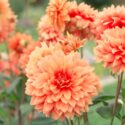
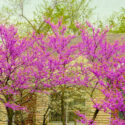
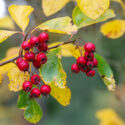
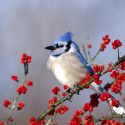
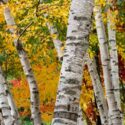
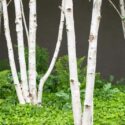
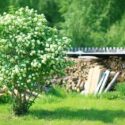
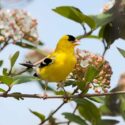


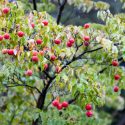
Create a membership account to save your garden designs and to view them on any device.
Becoming a contributing member of Gardenia is easy and can be done in just a few minutes. If you provide us with your name, email address and the payment of a modest $25 annual membership fee, you will become a full member, enabling you to design and save up to 25 of your garden design ideas.
Join now and start creating your dream garden!
Create a membership account to save your garden designs and to view them on any device.
Becoming a contributing member of Gardenia is easy and can be done in just a few minutes. If you provide us with your name, email address and the payment of a modest $25 annual membership fee, you will become a full member, enabling you to design and save up to 25 of your garden design ideas.
Join now and start creating your dream garden!